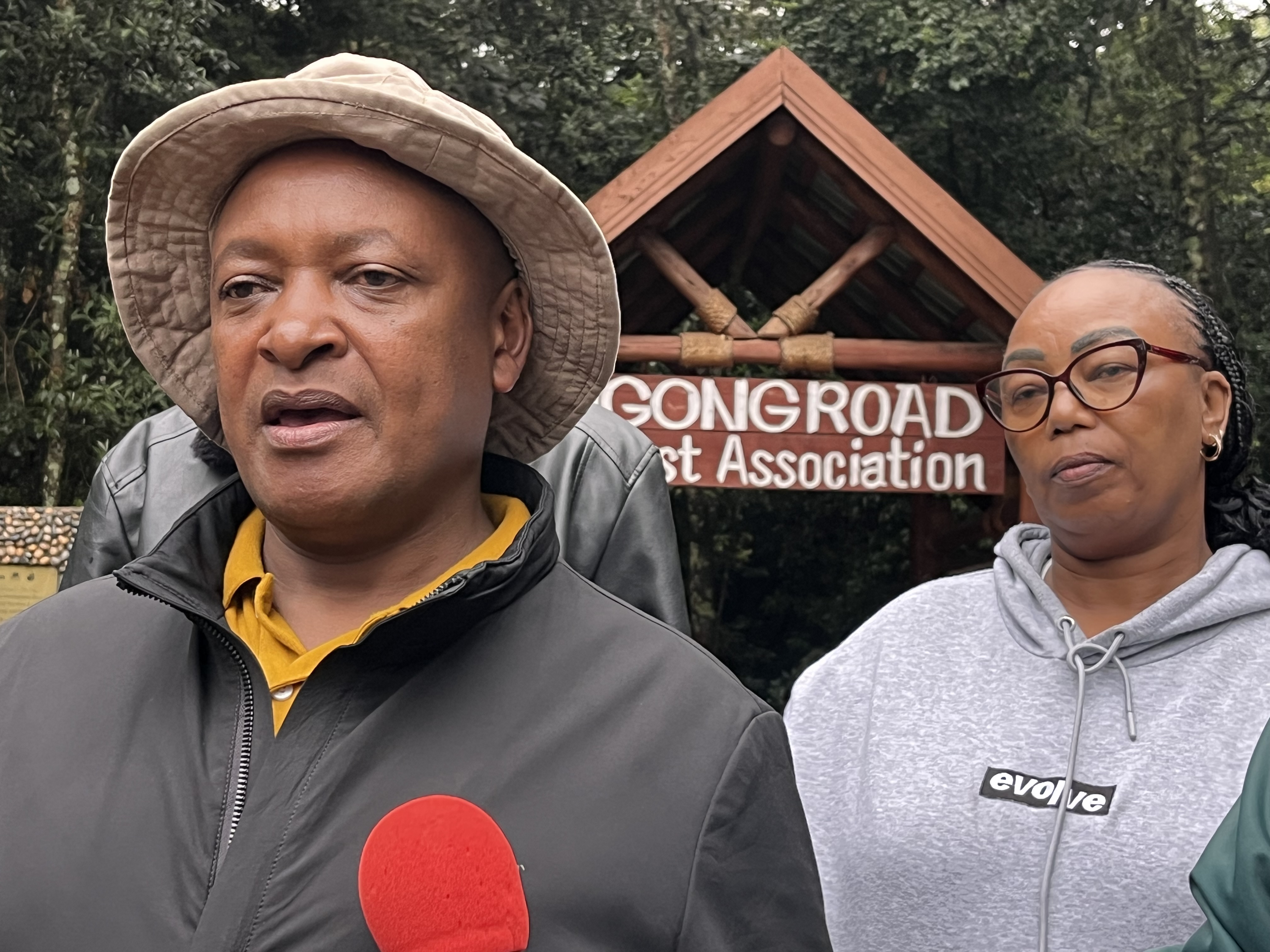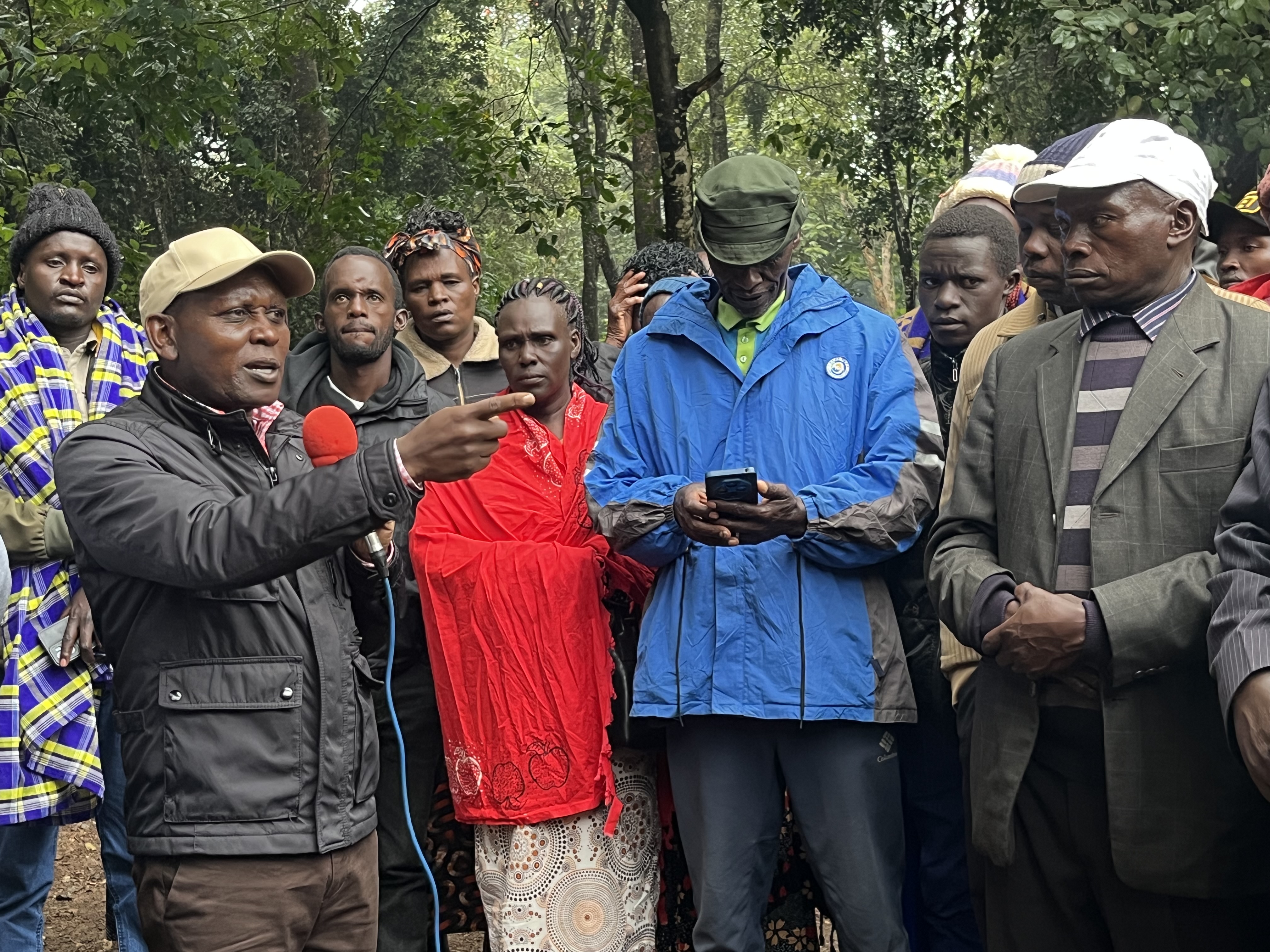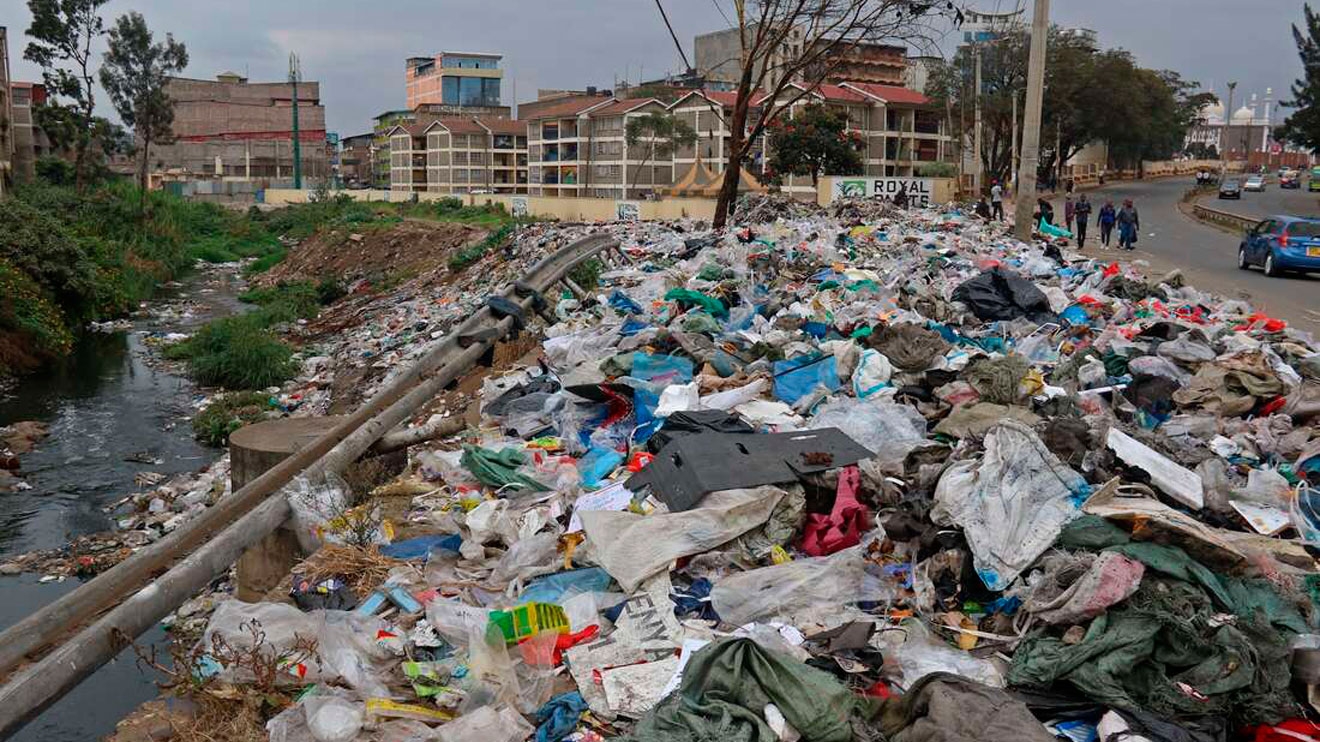
 Ngongroad Forest Association Secretary Simon Nganga speaking during a benchmarking tour by community members from Kaptagat. He is with KFS Coordinator for CFAs Joselyne Ndambu/HANDOUT
Ngongroad Forest Association Secretary Simon Nganga speaking during a benchmarking tour by community members from Kaptagat. He is with KFS Coordinator for CFAs Joselyne Ndambu/HANDOUT Chairman of Kaptagat Forest Conservation Programme Joseph Lagat (L) addressing community members during a benchmarking exercise at Ngong Forest on August 18, 2025/HANDOUT
Chairman of Kaptagat Forest Conservation Programme Joseph Lagat (L) addressing community members during a benchmarking exercise at Ngong Forest on August 18, 2025/HANDOUT
The Kenya Forest Service has intensified sensitisation of
communities living around the Kaptagat Forest ahead of plans to fence off the
critical water tower.
KFS is currently conducting a week-long sensitisation and
benchmarking tour for community members and forest associations from the
Kaptagat region.
The groups are visiting other fenced forests with active
Community Forest Associations (CFAs) that are reaping benefits from
better-managed forest resources.
The benchmarking started at Ngong Forest, where KFS Coordinator for CFAs Joselyne Ndambu said the country now has 235 associations, most thriving because of controlled access.
“Through this benchmarking, we expect members from Kaptagat
to learn how CFAs elsewhere are benefiting from forests that are managed
through fencing,” Ndambu said.
She said in Ngong, fencing has boosted projects run by CFAs
by improving security and curbing illegal access.
Nairobi region Forest Conservator added that fencing does
not deny communities access but instead safeguards ecosystems through regulated
entry points.
“The community around Ngong was fully involved in public
participation before fencing. They even helped decide where the gates would be
located,” she said.
Kaptagat Forest Conservation Programme chairman Joseph Lagat
said fencing had proved to maximise benefits for CFAs.
“This benchmarking is meant to help our CFAs to learn how
best to conserve while also benefiting from the forests,” he said.
His sentiments were echoed by Ngong Road Forest Association
secretary Simon Ng’ang’a, who said communities had gained more after fencing
than before.
The government has confirmed it will proceed with fencing
the 300-kilometre perimeter of Kaptagat Forest, with community members expected
to select the entry points.
While some residents have criticised the plan, President
William Ruto has defended it, insisting it will strengthen conservation of the
water tower.
Speaking during last month’s 9th edition of the Kaptagat
Forest Integrated Conservation Programme, spearheaded by Treasury PS Chris
Kiptoo, Ruto said fencing was necessary to stop degradation.
“We have fenced all other major forests in the country, and it is important we do the same for Kaptagat to reinforce ongoing conservation efforts,” he said.
He praised Kiptoo’s leadership, noting that extensive
grazing had been undermining tree regeneration.
So far, more than two million seedlings have been replanted as part of a reclamation drive that has won wide support from local communities and partner organisations.

















